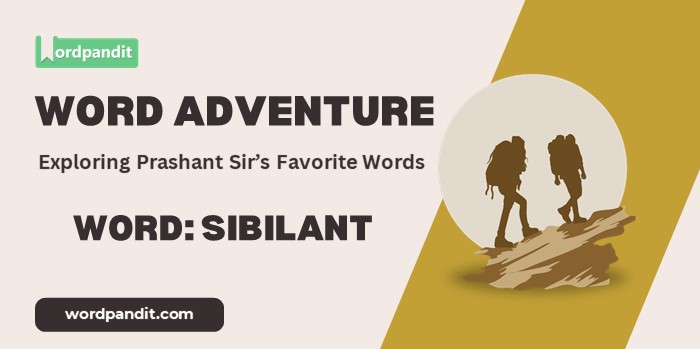Word Adventure: Sibilant
The Headline
"Sibilant: The Whisper of Words That's Music to Linguists' Ears"
The Scoop
In the symphony of language, some sounds stand out for their distinctive qualities. 'Sibilant' is a term that captures a particular type of sound that's both common in our speech and fascinating in its production. Let's embark on a journey to understand this whisper-like sound that plays a crucial role in the music of human language.
Let's Break It Down
The Plot Thickens
'Sibilant' comes to us from Latin, where it quite literally meant 'hissing'. This onomatopoeic quality – where the word sounds like what it describes – makes 'sibilant' a favorite among linguists and language enthusiasts.
In phonetics, sibilants are a type of fricative consonant, produced by directing a stream of air with the tongue towards the sharp edge of the teeth. The most common sibilants in English are the 's' and 'z' sounds, but they also include 'sh', 'zh' (as in 'vision'), 'ch', and 'j'.
Interestingly, while sibilants are common in many languages, some languages have more than others. For instance, the Taa language, spoken in Botswana, is famous for its extensive use of sibilant sounds, including some that don't exist in English.
Word in the Wild
The Twist
Here's an intriguing aspect of sibilants: while they're a natural part of many languages, the excessive use of sibilants can sometimes be considered a speech disorder, known as a 'lisp'. This duality – where the same sound can be both a standard language feature and a potential speaking difficulty – highlights the complex relationship between the physical aspects of speech production and our perception of 'correct' pronunciation. It's a reminder that what's standard in one context might be unusual in another, even within the same language!
Make It Stick
Sibilant: Where snakes and linguistics hiss in harmony!
Your Turn
Try saying this sibilant-rich sentence: "Sally sells seashells by the seashore." How many sibilant sounds can you identify? Can you come up with your own tongue-twister that's rich in sibilants? Share your creations in the comments below. Let's explore how these hissing sounds contribute to the music of our language!
Down the Rabbit Hole
- Curious about other linguistic terms for speech sounds? Look into 'plosives', 'nasals', or 'glottals'.
- Interested in how different languages use sibilants? Explore the phonetic inventories of languages like Polish, Mandarin, or Taa.
- Want to understand more about speech disorders? Research the different types of lisps and how speech therapists work with sibilant sounds.
The Last Word
As we conclude our exploration of 'sibilant', I hope you've gained a new appreciation for these hissing sounds that are so crucial to our speech. They remind us that language is not just about words and meanings, but also about the intricate dance of tongue, teeth, and breath that brings those words to life. The next time you hear a whisper, a hiss, or even a snake-like sound in speech, remember – you're not just hearing a noise, you're experiencing a sibilant! Until our next word adventure, this is Prashant from Wordpandit, encouraging you to listen closely to the symphony of sounds in your everyday speech!












